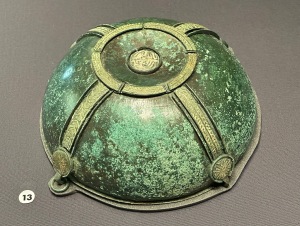Exploring in and around Southend
In my short stay in Southend-on-Sea I had time enough to explore a bit more of the local area, taking the time to enjoy the lovely walks along the coast to Chalkwell, Leigh-on-Sea and up to Hadleigh Castle.
The weather on Good Friday was distinctly grey and blustery, with the odd burst of rain, but the next day delivered blue skies and sun, far exceeding the weather forecasts. It was just warm enough for folk to head to the beach and there were queues at every pub in Leigh-on-Sea as folk came out to enjoy a little Easter sunshine.
I was pleased to finally get around to visiting the Crowstone, having known about this for years. The Crowstone is one of those wonderful historical relics that you find dotted around the country, a granite obelisk erected in 1837 marking the limits of the City of London’s jurisdiction over the Thames. This replaced a post from 1755, which in turn was a replacement – with some accounts hinting at a succession of posts stretching back centuries before this. Indeed, the rights the stones were in place to protect were purchased by the City of London from Richard I in 1197.
At one time there was a tradition of the Lord Mayors of London coming out by boat to check on the Crowstone every seven years, accompanied by great festivities. The names of visiting Lord Mayors were then inscribed upon the stone. All of this ceased in 1857 when the Thames Conservancy took over control of the river. The Crowstone was never entirely forgotten though, and in 1950 a plaque was added by the Port of London Authority when the heavily worn and crumbling 18th century post that sat alongside was moved to a location inland, in the grounds of Prittlewell Priory.
In my time in the area I visited twice, once early in the morning at low tide, so I could get up close, and then later in the afternoon, at high tide, to appreciate just how much the water envelopes the stone (well remembering Diamond Geezer’s account of visiting at high tide). The blog A London Inheritance has a wonderful account of the Crowstone and its counterpart, the London Stone, on the opposite side of the Thames.
Another interesting spot just along the coast offers a sight of the minesweeper HMS Wilton, now adapted as the home of the Essex Yacht Club. HMS Wilton was the world’s first warship made from glass-reinforced plastic (leading to its nickname of HMS Tupperware). The warship was laid down on 7th August 1970, decommissioned in 1994 and purchased by the Essex Yacht Club in 2001.
The unexpectedly lovely weather had drawn many folk out onto the muddy footpaths up to Hadleigh Castle and once I made it into the ruins myself I soon appreciated just why. The grassed over courtyard made an excellent spot for picnics with fine views over the coast.
Hadleigh Castle (1215) was one of Edward III’s favourite residences, which he lavished with enormous sums to rebuild and refurbish in the 1360s. Among the new additions were two drum towers with bands of flint decoration. It’s hard to tell from the surviving drum tower, but these featured the latest in 14th century mod cons, including high quality tiles imported from Europe, large fireplaces, plaster ceilings and chandeliers. Even better, it was surrounded by prime parkland for hunting. All befitting of a residence that was a luxury retreat for the King in his later years as much as a defensive fortress guarding the Thames estuary.
When I visit castles I imagine that the decay has been the work of centuries, but here the rot had set in only three decades after the completion of the original building works and the reconstructions of Edward III were no more protected from these natural forces. The soft clay was never going to provide a stable foundation and landslips soon contributed to major structural problems which saw sections of the wall collapse and continued to cause problems to the very end. The castle had an ignominious end, sold off for building materials in 1551.
More of the castle was still standing when Constable visited in 1814, capturing the scene in his painting Hadleigh Castle (1829).
Finally, I returned to Southend to take a peek at the finds from the Anglo-Saxon prince’s grave uncovered in 2003, an extraordinary story told brilliantly at Southend Central Museum. The Princely Burial exhibition explains how archaeologists had opened up a small plot during preparatory works for a road widening scheme and remarkably hit upon an intact, timber lined, burial chamber.
The international significance of the find can’t be overstated. The burial chamber held the remains and grave goods of an Anglo-Saxon prince, the earliest discovered in England, as well as being the earliest Anglo-Saxon Christian burial in the country.
The rich and exotic nature of the grave goods speaks volumes for the status of the individual in the grave, many having originating far from these shores, such as flagons from modern day Syria. The grave also contained the only piece of painted wood surviving from Anglo-Saxon England.
A wonderful interactive burial chamber app allows you to explore the finds and their positioning in the burial chamber in more detail.
Gallery
















leave a comment